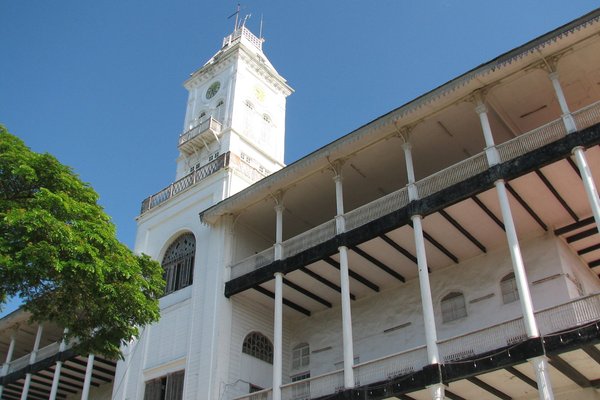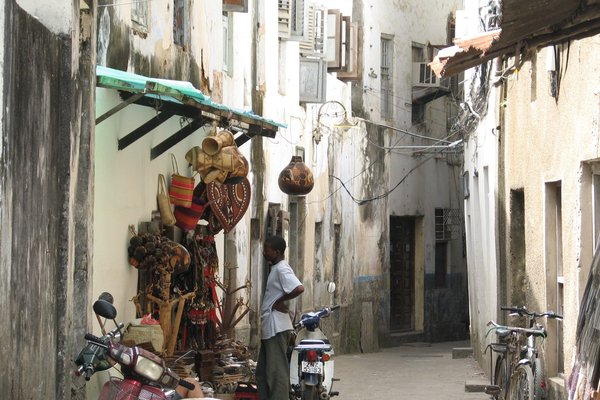Tanzania
Stone Town of Zanzibar
The Stone Town of Zanzibar is a well-preserved example of a Swahili coastal trading center.
Stone Town's Swahili architecture incorporates elements of Arab, Persian, Indian, European and African styles. The houses are particularly noticeable because they have large and ornately carved wooden doors. Stone Town also was a major port for the slave trade, and in the city remains of the last slave market, the house of a slave trader and a monument commemorating the work of David Livingston in abolishing the slave trade can be seen.
Community Perspective: there is not a huge amount ‘to see and do’, but, to quote Squiffy: “beneath the seaport grime the charm of old Zanzibar was very apparent as every aspect revealed crenelated rooftops, arched windows, faded wooden shutters and carved arabesques”.
Site Info
Official Information
- Full Name
- The Stone Town of Zanzibar (ID: 173)
- Country
- Tanzania
- Status
-
Inscribed 2000
Site history
History of Stone Town of Zanzibar
- 2000: Inscribed
- Inscribed
- 1982: Rejected
- "Should not be considered further for inclusion"
- Type
- Cultural
- Criteria
- ii
- iii
- vi
Links
- UNESCO
- whc.unesco.org
- Official
-
- stcda.go.tz — Stone Town Conservation and Development Authority
All Links
UNESCO.org
- whc.unesco.org — whc.unesco.org/
Official Website
- stcda.go.tz — Stone Town Conservation and Development Authority
News Article
- Dec. 26, 2020 whc.unesco.org — Collapse of House of Wonders in Zanzibar
- June 26, 2016 anglicannews.org — Zanzibar’s Christ Church Cathedral opens slave-trade heritage centre
- Jan. 4, 2015 allafrica.com — Three Cheat Death After Stone Town Building Collapse
- Oct. 13, 2013 dailynews.co.tz — Heritage centre established in Stone Town
- Jan. 20, 2010 worldtravelwatch.com — Zanzibar Power Blackout to Last Until Feb. 20
- June 20, 2008 worldtravelwatch.com — Zanzibar: Power Outage to Last Three Months
Community Information
- Community Category
- Urban landscape: Urban continuity
Travel Information
Undergoing Restoration or Repair
Recent Connections
-
Undergoing Restoration or Repair
The House of Wonders and the People’s P… -
Built or owned by Omanis
"In 1698, Zanzibar came under the influ… -
African Kingdoms
Sultanate of Zanzibar 1856-1964See en.w…
Connections of Stone Town of Zanzibar
- Individual People
-
-
John Muir
Zanzibar, Tanzania : January - February 1912 -
Henry Morton Stanley
Equipped and commenced his expedition to find Livingstone - Mar 1871. -
Ibn Battuta
-
Sir Richard Francis Burton
-
David Livingstone
-
- Geography
-
-
Swahili culture
characteristic Swahili architecture (Unesco website) -
Indian Ocean
-
- Trivia
-
-
Dubbed as another WHS
"the Venice of East Africa"See www.ippmedia.com
-
Built or owned by Omanis
"In 1698, Zanzibar came under the influence of the Sultanate of Oman. In 1832 or 1840 (the date varies among sources), Said bin Sultan, Sultan of Muscat and Oman moved his capital from Muscat, Oman to Stone Town." (wiki) and "The Old Fort, the oldest building in Stone Town, was built in 1699 by the Omanis"See en.wikipedia.org
-
Built or owned by British
Livingstone House, Anglican Cathedral, National Museum and High Court etc
-
- History
-
-
Located in a Former Capital
Sultanate of Zanzibar (1856-1964) -
Fusion
"brought together and homogenized disparate elements of the cultures of Africa, the Arab region, India, and Europe" -
Insurrections
1964 Zanzibar revolution -
Omani Sultanate of Zanzibar (Zanj)
-
African Kingdoms
Sultanate of Zanzibar 1856-1964See en.wikipedia.org
-
- Architecture
-
-
Urban fabric
-
Art Deco
Cine Afrique -
Vernacular architecture
"The Omani Arabics used coral for masonry, ..., and to make lime mortar through a process of heating coral to high temperatures until it becomes lime powder. Indians and Europeans introduced architectural forms to contend with the tropical climate, including rooftop terraces and sloped, corrugated metal roofs which perform better during the dual-monsoon seasons than the Arabic flat roofs" -
Coral Masonry
-
- Damaged
-
-
Bombarded by the British Navy
the Royal Navy launched a bombardment of the Sultan's palace during the very brief Anglo-Zanzibar War in August 1896See en.wikipedia.org
-
- World Heritage Process
- Religion and Belief
-
-
Augustinian Order
"(...) dozens of Christian graves were found dating to the 16th and 17th centuries, when an Augustinian mission stood on the site."See www.ippmedia.com
-
Notable mosques
Malindi Bamnara Mosque (Sunni, 1831) -
Cathedrals
Stonetown Anglican Cathedral
-
- Human Activity
-
-
Ongoing Archaeological digs
Archaelogical digs in the Old Fort led by the UAE in 2022 to investigate the origins of the Stone Town. A further expedition is planned in January 2023.See www.ippmedia.com
-
Slavery
-
Spice Route
"flourishing centre of the spice trade" (wiki)
-
- Constructions
-
-
Hospitals
The Old Dispensary - built originally as a hospital but seems never have been used as such -
Cemeteries
Royal Cemetery -
Baths
There are two sets of Persian baths in the Stone Town. The most elaborate are the Hamamni baths, built during the Sultanate of Seyyid Barghash (1870-88). -
Historic Pharmacies
The "Old Dispensary" (a "dispensary" dispenses medicines) -
Bazaars and Market Halls
Darajani MarketSee en.wikipedia.org
-
Historic Cinemas
Cine Afrique
-
- WHS on Other Lists
-
-
Located in a TCC Territory
Zanzibar -
Memory of the World
Collection of Arabic Manuscripts and Books -
U.S. Ambassadors Fund
Restoration of the 18th-Century Kizimkazi Mosque (2008), Preservation of 19th-Century Slave Trade Records in the Zanzibar National Archives (2005), Preservation of Traditional Taarab Music (2002) -
World Monuments Watch (past)
Christ Church Cathedral & House of Wonders and Palace Museum (2014)See www.wmf.org
-
- Timeline
-
-
Built in the 19th Century
For cultural fusion "In the 19th century this Swahili tradition was overwhelmed by new styles brought in by the floods of immigrants." and suppression of slavery "The Anglican cathedral is in part a monument commemorating the abolition of the slave trade in the Sultan's dominions. The foundation stone was laid in 1873" (AB ev)
-
- Visiting conditions
-
-
Undergoing Restoration or Repair
The House of Wonders and the People’s Palace museum are both being renovated, plus road works.
-
- Literature & Film
-
-
Poetic Quotations
"It is not worthwhile to go around the world to count the cats in Zanzibar". Henry David Thoreau in the Conclusion of "Walden" 1854. -
Works by Nobel Prize winning authors
Gurnah (2021): several (Gurnah was born here), including Gravel Heart
-
News
- whc.unesco.org 12/26/2020
- Collapse of House of Wonders in Za…
- anglicannews.org 06/26/2016
- Zanzibar’s Christ Church Cathedral…
- allafrica.com 01/04/2015
- Three Cheat Death After Stone Town…
Recent Visitors
Visitors of Stone Town of Zanzibar
- Adrian Turtschi
- Afshin Iranpour
- AK
- Alberto Rodriguez Gutierrez
- alex
- Alex Baranda
- alicemears
- Alikander99
- Ali Zingstra
- A. Mehmet Haksever
- Ammon Watkins
- AmyAbroad
- amychemu
- Andrea Szabo
- Angela Vandyck
- arnaugir
- Artur Anuszewski
- Ask Gudmundsen
- Aspasia
- Astraftis
- Atila Ege
- Bill Maurmann
- Bram de Bruin
- Brett Baumann
- brornt
- Can SARICA
- Carlo Medina
- Carlo Sarion
- chapnis
- Csaba Nováczky
- czesioszpachelka
- Daniel Gabi
- dave wood
- David Marton
- Deffra
- Dimitar Krastev
- Dolemite92
- Elf21
- Els Slots
- Erfe91
- Eric Lurio
- Eva Kisgyorgy
- Fan Yibo
- fedemarch92
- Felicité
- Fernweh
- frizzle
- futtaimhb
- Geert Luiken
- GerhardM
- Gernot
- Gjert
- Grzegorz Andruszkiewicz
- Hadrianus
- Harry Mitsidis
- Iain Jackson
- IreneKD
- Jana and Matt
- Jarrod_Byham
- Javier
- Javier Coro
- Jeanne OGrady
- Joel on the Road
- Jonas Martinsson
- jonathanfr
- Jon Opol
- Joyce van Soest
- Kbecq
- KeithBailey
- kelseyyurek
- KentishTownRocks
- Knut
- Krijn
- Lars Bogstad
- Liamps91
- Lindaflat
- Little Lauren Travels
- Loic Pedras
- Lucio
- Ludvan
- Luis Filipe Gaspar
- Lukemarshall
- Maja
- Malgorzata Kopczynska
- Marinemajor
- Marlies van Wolfswinkel
- Martin
- Mathijs
- Matthewrw
- MAURO PODDA PANI
- Michael Novins
- michaelsballard
- Mikko
- Monica Tasciotti
- Morodhi
- Mstrebl1990
- Mtlmr
- Niall Sclater
- Nihal Ege
- NoahFranc
- Olli-Pekka Turunen
- PabloNorte
- Patrik
- Paul Schofield
- Peltzi
- petar
- Philipp Leu
- Pieter Dijkshoorn
- Pink Bunny
- Piotr Wasil
- Potsdamer
- Priyaranjan Mohapatra
- Rahelka
- Randi Thomsen
- Reza
- rivr
- Roger Ourset
- Roman Bruehwiler
- Sandra!
- Shandos Cleaver
- Shannon O'Donnell
- Sofia84
- Solivagant
- Squiffy
- Squire Sullen
- stephhollett
- streliorsi
- Sutul
- Svein Elias
- Szucs Tamas
- Thomas Buechler
- Thomas van der Walt
- Tim Allen
- Timothy C Easton
- Tinamu
- travellingcat
- triathlete_16
- Truls Brekke
- Vanessa Buechler
- Vernon Prieto
- Waxwing
- Wojciech Fedoruk
- ZCTLife
- zfish
- Zoë Sheng
- Zsuzsanna Forray
Community Reviews
Show full reviews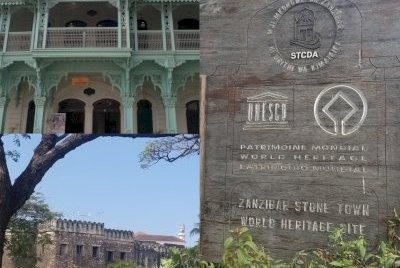
I get the charm and it's quite touristy when you arrive by ferry, walk along the cleanish port and enjoy the sunshine and breeze and hey, Freddie Mercury museum!! However, venture deeper and it is dirty, hazardous, on the brink of collapsing (word is the site will be placed on the in-danger list soon). I think the idea of the entire old town being inscribed doesn't quite cut if anymore. Sure there are random houses, doors and windows from the classic ages but they have either been destroyed or replaced with only a few spots being highlights. In its defense it rained the night before and even in the morning I visited so the roads were dirty and zero fun to walk around. There are also motorbikes and some roads allow cars meaning the car-free zone is mainly where the shopping alleys are. It doesn't help that the north end of town is the ever-busy fish market and the east side a bazaar (not the touristy kind, more of outdoor market for the locals).
The history of the old town is important but neglected care and financial commitment, plus from what I read the inscription was more or less a favor or acting in good faith that it will be handled by the semi-autonomous region. Fail.
As it's an easy visit and any visit to Zanzibar (especially by ferry) makes it an obvious itinerary inclusion, and even a day trip from Dar Es Salaam is doable. In hindsight …
Keep reading 0 comments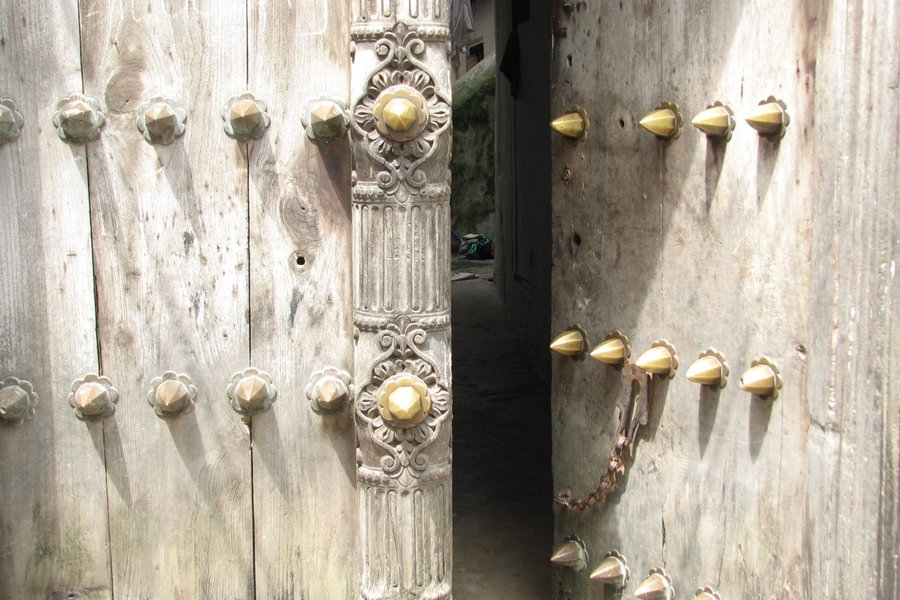
Time of visit: July 2016
Duration of visit: 2 days
Mode of transportation: by propeller plane flight from Dar es Salaam (sit in the co-pilot seat if you can!)
Review and experience
I visited Zanzibar almost by pure chance - I had come to central Tanzania with a small group for a volunteer project. However, before I could board the return flight on Turkish Airlines, a military coup erupted in Turkey and Istanbul closed its airport. So when life gives me a lemon, I ended up making lemonade and extended my stay in Tanzania with a few days in Zanzibar.
My initial reaction arriving at Stone Town was, "Wow, this is a totally different side of Tanzania". It's interesting that Tanzania gets half of its name from the tiny island of Zanzibar, and to me that goes to show the historical significance that Zanzibar carried at the time of its union with Tanganyika (main land Tanzania) in the 1960s. Zanzibar is a true melting point of cultures, and perhaps most reminiscent of time I had spent in Singapore. Stone Town's architectural style is stunning - most beautiful of which were the large, intricate doors, featuring distinct Arabic, Indian, and Swahili styles. It was so easy to get lost in the narrow, winding alleyways, and I loved that each turn I made was another pleasant surprise of colors and building styles. From the shore, the European influence on Zanzibar also immediately became clear with the Portuguese …
Keep reading 0 comments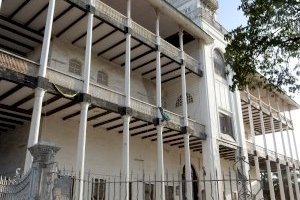
We arrived in Zanzibar late at night. Exhausted, I set the alarm, assuming that – unlike on the savannah – there would be no dawn chorus. Incorrect. It just would not be provided by the wildlife. The call to prayer woke me, a lone muezzin beseeching the faithful, his melodic words hanging in the air. After a minute his colleagues joined in, Allahu akbar emanating from every direction, their different intonations and rhythms smearing into and over each other like fresh paint between two panes of glass. Stone Town woke. Engines revved, horns parped and children shouted. Animated discussions echoed up from the narrow street. A radio emitted a blare of exotic music. In the distance a cock crowed. Stepping from the air-conditioned room out onto the balcony was like entering a steam room. Stone Town lay revealed below me. It was not in any way a picture postcard view. A sea of rusty brown corrugated iron roofs stretched away in both directions. Jumbles of rubbish could be glimpsed through gaping windows. Cracked plasterwork rotted in the humidity. Yet beneath the seaport grime the charm of old Zanzibar was very apparent as every aspect revealed crenelated rooftops, arched windows, faded wooden shutters and carved arabesques.
There is maybe not a huge amount to ‘do’ in Stone Town. It is not Venice. In fact the historic core is probably smaller than that of Valletta. You head out, you enjoy the tropical atmosphere and you try to avoid the papasi – …
Keep reading 0 comments
This was written in 1989, when I was first starting out....
Mr.Mitu's Botanical Safaris
By Eric Lurio
Zanzibar. You start with a name. Everybody's heard of it somewhere. A mythical place that only exist in the Arabian nights or in the lyrics of Billy Joel. The name brings to mind many things; romance, intrigue, adventure. Many, many things, but fruit isn't one of them. But nowadays, fruit is what Zanzibar is all about
I first heard of Mr. Mitu's spice tours from a Scottish lady in Arusha, Tanzania. My friends and I had just finished a safari and she was trying to put together one, and we were comparing notes. She said that there were three musts when I got to Zanzibar—hang out at the beach, go to nearby Prison Island and see the giant tortoises, and take the spice tour. I was intrigued.
So the next morning. I bought a bus ticked for Dar-Es-salaam, the capitol of Tanzania, where it was said transportation there could be had.
One thing that must be said about Tanzania: it's dead broke. It's been that way since the war with Uganda in 1979, and consequently hasn't been able to start repaving the roads until very recently. this makes it very hard to sleep on the overnight bus, a situation aggravated by the driver's playing a tape of "Mammu on the Telephone" at full blast over and over again for most of the night.
Arriving at Dar, as it is called, one becomes aware …
Keep reading 0 comments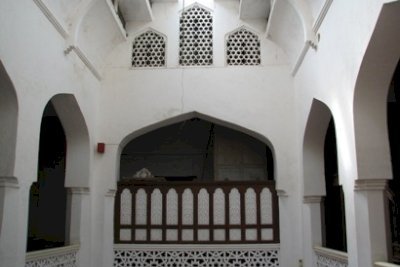
I really enjoyed Stone Town. Probably because it's so different from mainland Tanzania: it has historic buildings, museums, and bustling city life. This all is the result of the very different route in history Zanzibar has taken from its partner Tanganyika, with which it has formed the United Republic of Tanzania since 1964. Its attraction lies in the car-free narrow streets which show the Arabic and Asian influences and did remind me of Kathmandu or Jerusalem. I made three separate visits to Stone Town, which is almost hassle-free to walk around on your own, exploring more and more of the backstreets on every visit.
The bigger late 19th century monuments are located on the main street looking out over the sea. It starts up north with the Old Dispensary, a turquoise coloured ornate building that looks very Indian. The Palace Museum is located in the former palace and shows the life of the Omani sultans that ruled Zanzibar from 1698 until independence. Its interior decoration is a mix of European and Indian styles. Next to it stands the House of Wonders, now a museum of Zanzibar history. The Old Fort is like an old fort everywhere - they do survive quite well due to their sturdy construction, but this isn't more than a set of walls. A lot of the historic monuments in Stone Town are very run-down anyway. The house of notorious slave trader Tippu Tip even looks to be taken over by a family of squatters.
…
Keep reading 0 comments
Stone Town is the last of the 4 WHS reviews from our Feb 2008 “Indian Ocean” trip (despite being the first site we saw), mainly because I have had difficulty in deciding what to say about it - I wonder why? There was nothing wrong with the place and I have no really negative comments. The general atmosphere is relaxed and reasonably “safe” and there are points of interest – but nothing greatly memorable. So I cannot really “enthuse”. Interestingly at the 1982 WHC Zanzibar Stone Town was rejected (not just “deferred”) with the simple (and very “final”!) phrase “Should not be considered further for inclusion”. Yet at the 2000 WMC it reappeared “from the dead”, with not so much as a “deferral” in the previous year for strengthening of Management Plans or similar! Strange are the ways of the WMC – I wonder what had happened at Stone Town in the intervening 18 years to change it from a “no hoper” into “3 criteria” success!
The place is certainly “on the up”, with old buildings being developed as “boutique hotels” (though many also remain in disrepair) and a beautiful Serena hotel on the waterfront. Thankfully these developments have avoided obvious intrusiveness since the town’s original “completeness” was stated to be a particularly significant factor in its UNESCO inscription. Apart from the Portuguese fort, the vast majority of buildings, and all the significant ones, date from the nineteenth century and create an atmosphere drawing significantly on India and Arabia. The …
Keep reading 0 comments
This ancient town has not lost the magic and allure it used in seducing and enticing kings to abandon their subjects and move their seat of government away from home. It is the only town in which one may wander about freely at midnight without any fear of mugging.
With her friendly, cheerful, out-going and welcoming residents, Zanzibar is a relatively safe haven unlike many cities of the world where I am often cautioned against even venturing beyond the hotel precincts unaccompanied by armed security.
Zanzibar Island, I am told, was colonised over the centuries by a succession of people ranging from Egyptians, Chinese, Persians, and Omanis, to Portuguese, Dutch and British. This legacy has given rise to the cultural hotpot reflected in architecture, culture, religion and cuisine of this almost magical East African island whose every corner offers a new, exotic scent.
Heavy wooden doors and their frames carved as intricately as the embroidered caps on the heads of older men give a magical feel to the maze of narrow alleyways that reminds one of the ancient Middle Eastern towns as described in the Bible. Add to it the curry and cardamom from the kitchens and sandalwood from the almost enchanting women in black robes and what you have is a magical, fairy tale-like Spice Island.
Keep reading 0 comments
